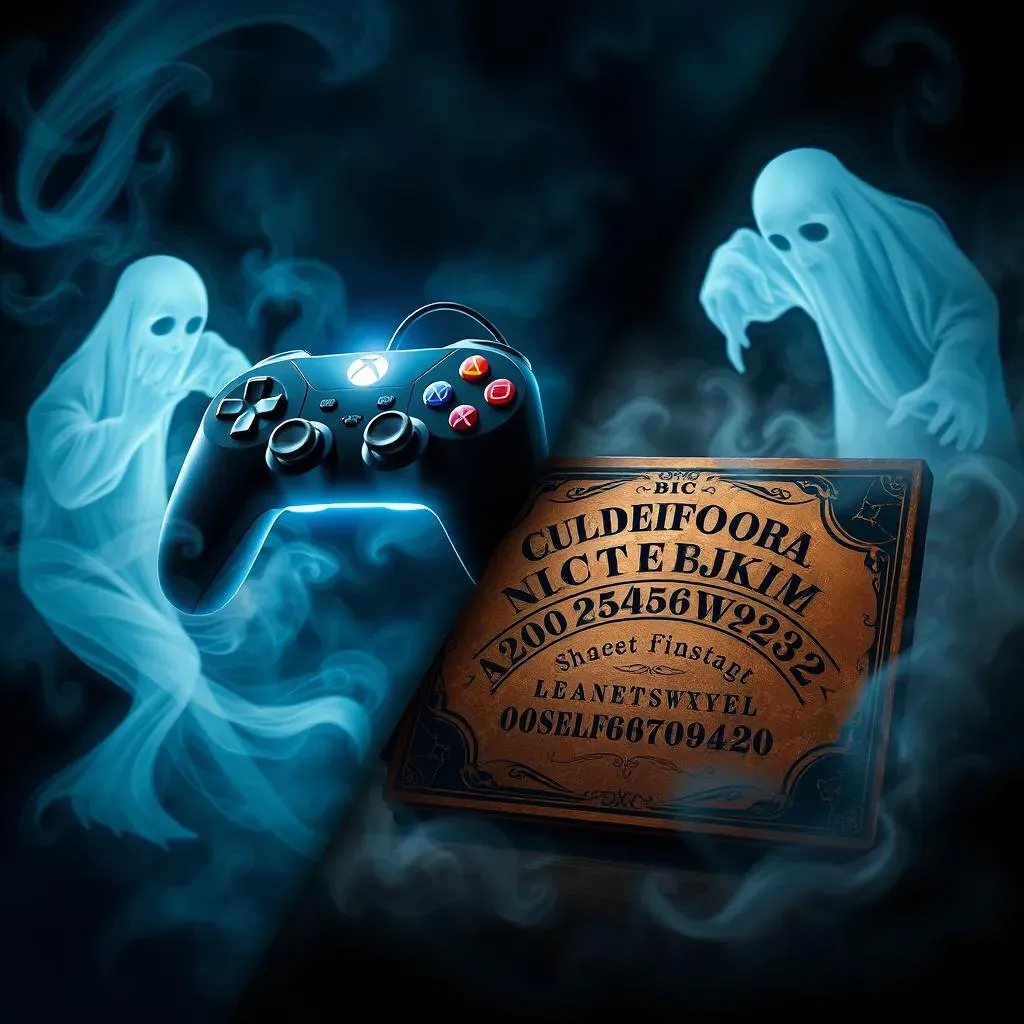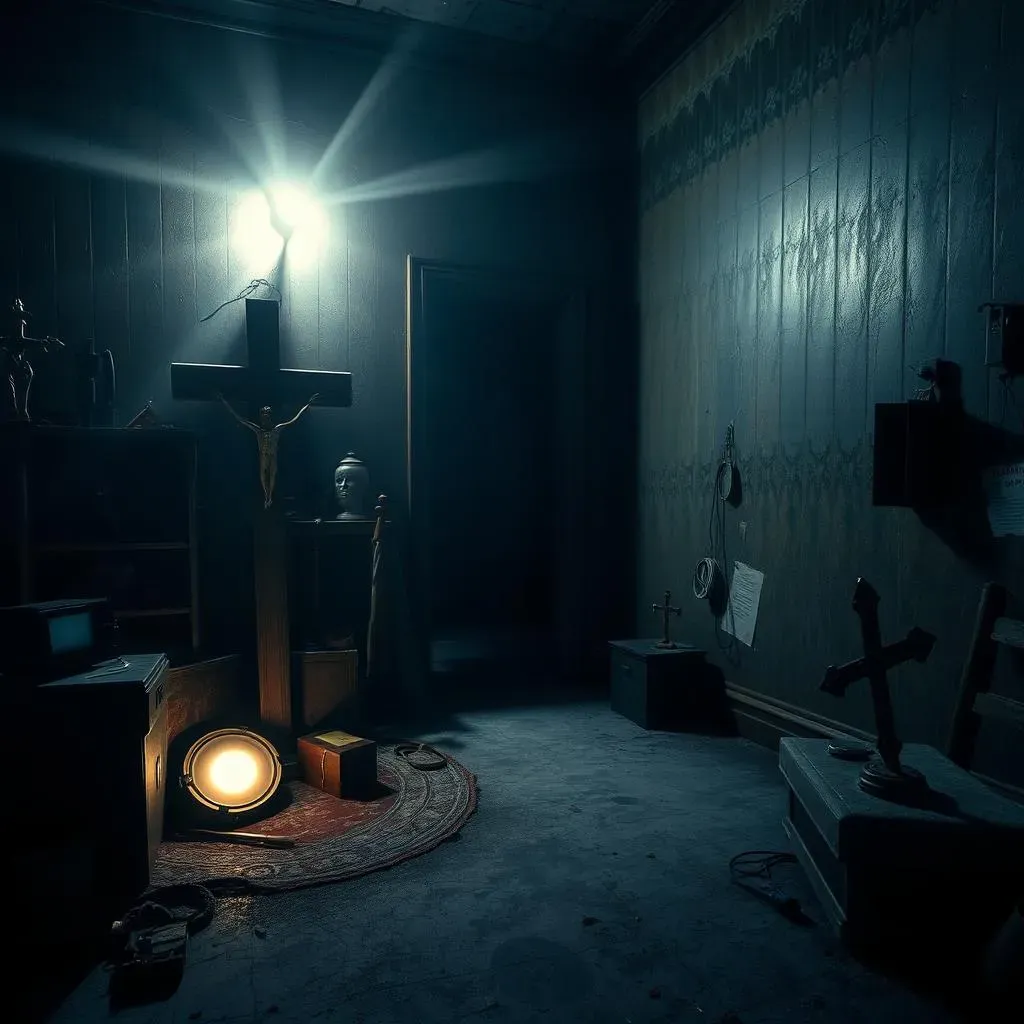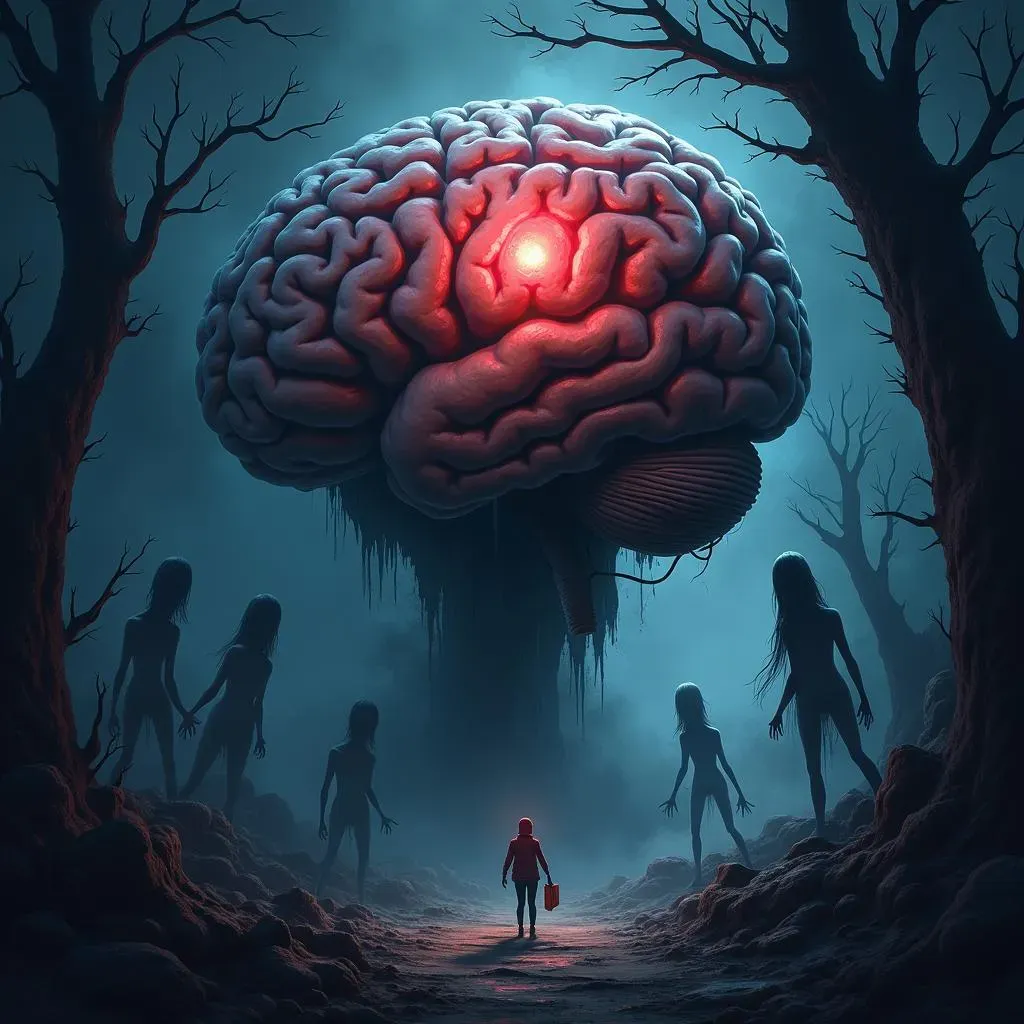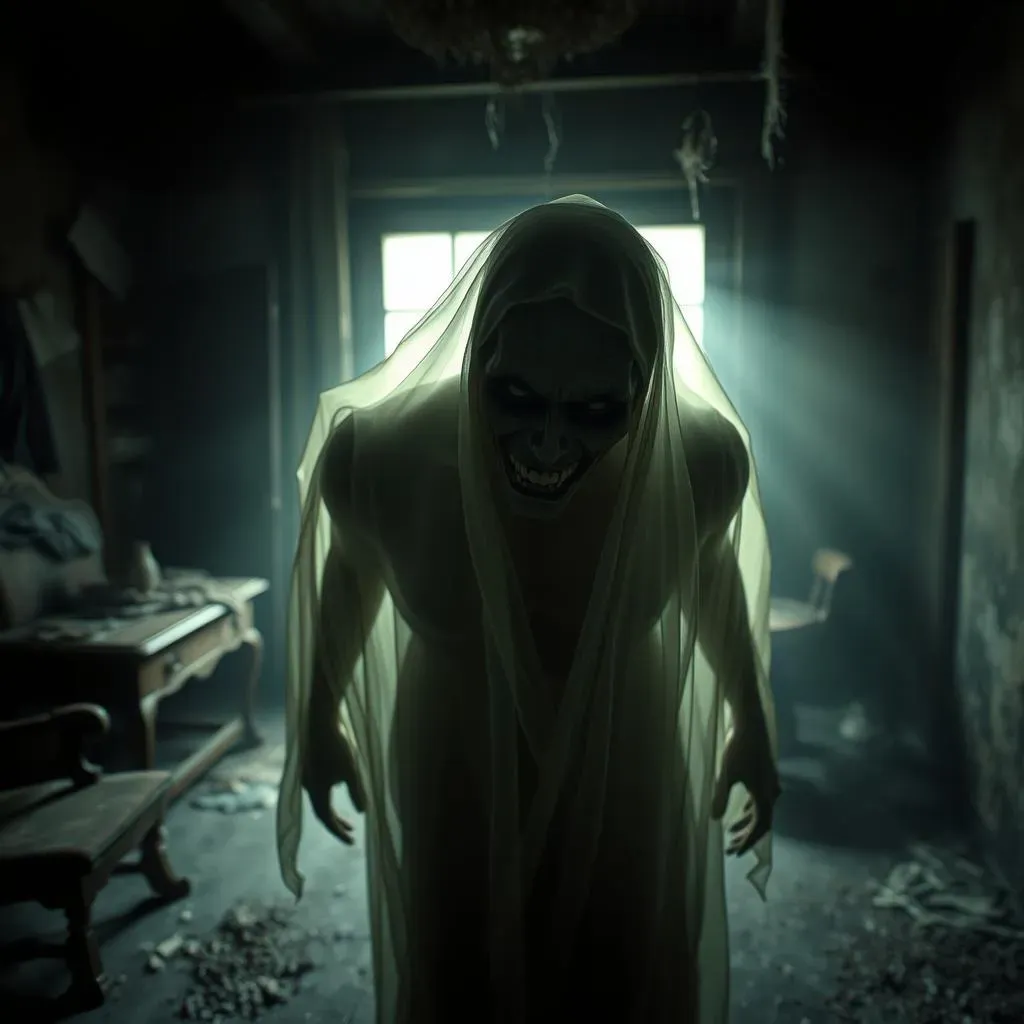Table of Contents
Ever since its release, the popular video game Phasmophobia has sent shivers down spines worldwide. Its realistic depiction of ghost hunting has sparked a burning question in many players' minds: are Phasmophobia ghosts real? This article will embark on a journey to explore this very question, examining the game's design, its basis in real-world folklore and paranormal beliefs, and the psychological impact of its intense gameplay. We'll delve into the cultural and historical influences behind the game's various ghost types, exploring their origins in myths, legends, and even documented accounts of unusual phenomena. We'll then examine the psychology of fear itself and how Phasmophobia expertly uses this to create such a compelling and terrifying experience. Finally, we'll step back and look at the game from a broader perspective, considering the line between reality and illusion in the context of interactive entertainment. Prepare to question your own perceptions of reality as we unravel the mysteries surrounding the question: are Phasmophobia ghosts real?
Phasmophobia's Ghosts: Fact or Fiction?
Phasmophobia's Ghosts: Fact or Fiction?
The Game's Design: A Masterclass in Fear
Let's be clear: Phasmophobia isn't a documentary. It's a video game designed to scare you, and it does a fantastic job. The developers cleverly blend realistic visuals with genuinely unsettling sound design and mechanics to create a truly immersive experience. The ghosts themselves aren't "real" in the sense that they're not actual supernatural entities inhabiting your computer. Instead, they are sophisticated AI routines programmed to react to your actions, creating a sense of unpredictable danger.
Think of it like a really elaborate haunted house. The scares are carefully orchestrated, the atmosphere is meticulously crafted, and the jump scares are… well, they're jump scares. But the overall effect is undeniably effective. The game doesn't claim to be a paranormal investigation simulator; it’s a horror game using the themes and trappings of ghost hunting to deliver thrills and chills. This distinction is crucial to understanding the debate surrounding the game's realism.
Game Element | Real-World Counterpart | Game's Interpretation |
|---|---|---|
Ghost Interactions | Paranormal Activity (Claimed) | AI-driven events and responses |
Evidence | Paranormal Evidence (Claimed) | Game mechanics triggering clues |
Hunts | Ghost Encounters (Claimed) | Pre-programmed AI sequences |
The Power of Suggestion and Believability
Even though we know Phasmophobia's ghosts are programmed, the game's effectiveness lies in how convincingly it simulates a paranormal investigation. The realistic graphics, the eerie soundscapes, and the unpredictable behavior of the ghosts all contribute to a powerful sense of unease. This is where the psychology of fear comes into play. Our brains are wired to interpret ambiguous stimuli in the most threatening way possible. The flickering lights, the disembodied whispers, the sudden cold spots—these elements tap into our primal fears, making us believe something truly unsettling is happening, even if we intellectually know it's not.
Furthermore, the game's emphasis on teamwork and collaboration enhances the experience. When playing with friends, the shared fear and uncertainty can amplify the sense of dread, making the experience even more intense. This shared experience blurs the lines between game and reality, fostering a sense of collective belief in the "haunting," even if it's purely fictional. The game cleverly uses the power of suggestion to create a believable, terrifying world, even though the ghosts themselves are entirely digital constructs.
- Realistic graphics and sound design
- Unpredictable AI behavior
- Emphasis on teamwork and collaboration
- Exploitation of primal fears
Exploring the RealWorld Inspirations Behind Phasmophobia's Ghosts
Exploring the RealWorld Inspirations Behind Phasmophobia's Ghosts
Mythological and Folklore Roots
Phasmophobia's ghosts aren't plucked from thin air; they draw heavily from a rich tapestry of global mythology and folklore. The Oni, for example, are fearsome demons from Japanese mythology, known for their grotesque appearance and violent nature. Similarly, the Yurei, vengeful spirits from Japanese lore, perfectly embody the game's haunting atmosphere. The developers cleverly adapt these established figures, blending their core characteristics with game mechanics to create unique and chilling in-game entities. This approach allows them to tap into pre-existing anxieties and cultural understandings of the supernatural, making the ghosts even more unnerving.
The game doesn't just borrow from East Asian cultures. Many ghosts are inspired by European and other global traditions. The Banshee, a wailing spirit from Irish folklore, is a prime example. These diverse influences give the game a broad appeal and add layers of depth to the horror experience. By drawing upon these well-known figures, the developers enhance the game's believability, even if the ghosts themselves are entirely fictional creations within the game's virtual world.
In-Game Ghost | Cultural Origin | Key Characteristics |
|---|---|---|
Oni | Japanese Mythology | Demonic, grotesque, violent |
Yurei | Japanese Folklore | Vengeful spirits, often depicted as pale and ethereal |
Banshee | Irish Folklore | Wails to foretell death |
Real-World Paranormal Investigations and Claims
While Phasmophobia is a game, its design draws inspiration from the world of paranormal investigations. The evidence types—EMF readings, ghost orbs, spirit box responses—all echo tools and techniques used by self-proclaimed paranormal investigators. Even the game's mechanics, such as the use of crucifixes and salt, mirror practices found in some paranormal investigation communities. This subtle nod to real-world practices adds another layer to the game's unsettling realism. It subtly suggests that the events within the game could, theoretically, have a real-world counterpart, even though the game itself is a work of fiction.
However, it's vital to distinguish between the game's portrayal and actual paranormal investigations. Phasmophobia simplifies and dramatizes the investigation process for the sake of gameplay. The game's ghosts are predictable within their programmed parameters, unlike the unpredictable nature of genuine paranormal claims. The game's use of real-world tools and techniques should be seen as a stylistic choice rather than an endorsement of any specific paranormal beliefs or practices. The game's primary goal is entertainment, not scientific accuracy or a definitive statement on the existence of ghosts.
- EMF Readers
- Spirit Boxes
- Salt
- Crucifixes
The Blending of Fiction and Reality
The true genius of Phasmophobia lies in its masterful blending of fiction and reality. It takes elements from established mythologies, real-world practices, and the psychological study of fear to create a truly unique and terrifying experience. This careful blending of fact and fiction is what makes the game so effective and so memorable. It's not just about jump scares; it's about creating an atmosphere of genuine unease and uncertainty.
Ultimately, the question of whether Phasmophobia's ghosts are "real" becomes less important than the game's ability to convincingly simulate the experience of a paranormal investigation. The game utilizes carefully crafted elements to trigger primal fears and exploit our inherent tendencies to interpret ambiguous stimuli in the most threatening way possible. This masterful manipulation of our perceptions is what truly makes Phasmophobia a haunting and unforgettable experience. It is a testament to the power of well-executed game design and its ability to tap into our deepest anxieties.
The Science of Fear and Phasmophobia's Psychological Impact
The Science of Fear and Phasmophobia's Psychological Impact
Jump Scares and the Amygdala
Phasmophobia masterfully uses jump scares to elicit a visceral fear response. These sudden, unexpected moments of terror trigger the amygdala, the part of the brain responsible for processing fear and emotions. The amygdala's rapid response to sudden stimuli explains the immediate physical reactions we experience—the racing heart, the increased adrenaline, the feeling of being startled. The game cleverly utilizes visual and auditory cues to build suspense, creating an anticipation that amplifies the impact of the jump scare itself. This isn't just about cheap thrills; it's a calculated manipulation of our neurological responses to maximize the fear response.
The effectiveness of jump scares isn't solely reliant on surprise; it's also a function of context and expectation. The game carefully builds tension through sound design, subtle visual cues, and the unpredictable behavior of the ghosts. This creates a sense of unease and anticipation, making the jump scare even more impactful when it arrives. The anticipation itself contributes significantly to the overall fear response, as the brain prepares for a potential threat. This carefully crafted suspense is a crucial component of the game's psychological manipulation.
Element | Psychological Effect |
|---|---|
Sudden Noise | Startle Response, Amygdala Activation |
Visual Shock | Increased Heart Rate, Adrenaline Release |
Suspense Building | Anticipation, Heightened Fear Response |
Environmental Storytelling and the Power of Suggestion
Beyond jump scares, Phasmophobia leverages environmental storytelling to create a pervasive sense of dread. The game's environments are designed to be unsettling, even before any paranormal activity occurs. Dim lighting, creaking sounds, and the general atmosphere of decay all contribute to a feeling of unease. This builds a baseline level of anxiety, making subsequent paranormal events even more frightening. The game subtly uses our brains' natural tendency to seek patterns and meaning, even in ambiguous situations, to create an overwhelming sense of unease.
The game also expertly uses the power of suggestion. Rather than explicitly showing everything, Phasmophobia often relies on subtle clues and ambiguous events. This forces players to interpret what's happening, often leading to more frightening conclusions than what's actually presented. This ambiguity taps into our brains' innate tendency to fill in the gaps, often with the most alarming possibilities. The game cleverly plays on our imaginations, making the fear even more potent than any explicitly shown horror.
- Dim lighting and unsettling soundscapes
- Ambiguous events and clues
- Use of suggestion and implication
- Exploitation of our tendency to interpret ambiguity negatively
Social Anxiety and the Shared Fear Experience
Phasmophobia's multiplayer aspect enhances the psychological impact significantly. The shared experience of fear with friends creates a unique dynamic, amplifying the overall anxiety and making the game even more intense. The reliance on teamwork and communication intensifies the feeling of vulnerability, as players rely on each other for both physical and emotional support. This shared vulnerability enhances the sense of immersion and makes the game significantly more terrifying.
The social element also introduces the potential for social anxiety. The pressure to perform well, the fear of letting down teammates, and the possibility of being the target of a ghost's wrath all contribute to the overall stress and anxiety experienced while playing. This blend of individual fear and social pressure creates a uniquely intense and immersive horror experience, pushing the psychological boundaries of the game beyond simple jump scares and atmospheric dread. The game's success lies in its masterful manipulation of both individual and social anxieties.
Are Phasmophobia Ghosts Real? A Gamer's Perspective on Reality and Illusion
Are Phasmophobia Ghosts Real? A Gamer's Perspective on Reality and Illusion
The Illusion of Reality
So, are Phasmophobia's ghosts real? The short answer is a resounding no. They're lines of code, cleverly designed algorithms, and meticulously crafted assets. But that doesn't diminish the experience. The game's power lies not in its claim to supernatural accuracy but in its breathtaking ability to create a convincing illusion of reality. It leverages our pre-existing fears, cultural understanding of ghosts, and the power of suggestion to make us *believe* in the haunting, even while knowing it's a game. The fear, the adrenaline, the shared experience—these are all very real, even if the ghosts aren't.
Think about it like a really well-made horror movie. We know it's fiction, yet we still jump at the scary parts, feel the tension, and experience the chills. Phasmophobia does the same thing, but interactively. It's a masterclass in suspense and atmosphere, expertly using sound design, lighting, and AI to create a truly immersive and terrifying experience. The game never claims its ghosts are real; it simply invites us to experience the fear associated with the *idea* of ghosts.
- Sophisticated AI routines
- Immersive sound design
- Realistic visuals and environments
- Masterful use of suspense and atmosphere
The Blurred Lines of Belief
The interesting thing about Phasmophobia is that it doesn't need to claim that its ghosts are real to be effective. The game's success lies in its ability to create an environment where belief, even if temporary and suspended disbelief, becomes a powerful factor in the gameplay. The shared experience with friends, the collective effort to solve the mystery of the haunting, and the palpable tension as the hunt begins—all these elements contribute to the feeling of a genuine paranormal encounter. The game taps into something deeper than simple jump scares; it plays on the human tendency to believe in the unknown and to find meaning in ambiguous situations.
Ultimately, the question of whether Phasmophobia's ghosts are "real" is less about the game's fidelity to actual paranormal phenomena and more about the power of its design to create a convincing and terrifying experience. It's a testament to the skill of the developers and their ability to manipulate our perceptions and tap into our deepest anxieties. It's a thrilling game, a masterclass in horror, and a thought-provoking exploration of the psychology of fear, regardless of whether or not you believe in ghosts.
Aspect | Contribution to Believability |
|---|---|
Teamwork | Shared experience intensifies fear |
Ambiguous Clues | Encourages interpretation and speculation |
Unpredictable AI | Creates a sense of genuine danger |
